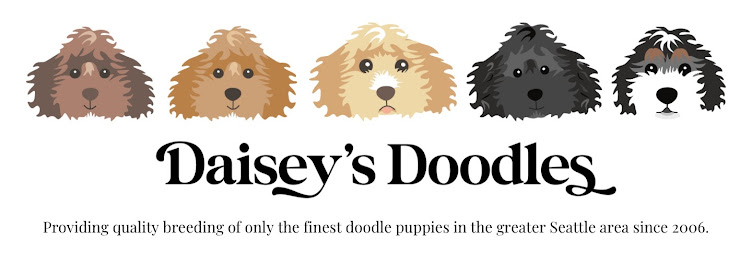Puppy pads in a spot near the door, or in a main area, can be a good transition tool as you work toward your puppy going outside to poop and pee on a consistent basis.
A few basics go into potty training your puppy. Consistency and patience are key. First, control when your puppy eats and drinks so you know when they need to go. (Except, puppies should have access to water at all times when the weather is hot.) Second, always praise your puppy when he or she goes to the appropriate place. Third, keep a consistent schedule for taking trips outside.
Puppies have small bladders, and need to go more often than more mature dogs. They poop far more frequently also. Be sure to have opportunities for your puppy to do the right thing, and be praised and loved for it. Using a cue word or phrase will help too. We use “good potty!” for when the puppy has gone in the appropriate place, and “go potty!” as a cue to get the puppy used to going when asked, so when you’re on a long car trip you can reliably get him or her to go when you stop.
It's probably unnecessary to say, but always praise your puppy for doing the right thing! Make him or her think they are the best, most amazing dog in the world for going to an appropriate place. On the other hand, scolding your puppy for messing on the rug will make him confused and fearful of pooping or peeing anywhere. If he goes to an inappropriate place, just quietly clean it up. You don’t want your puppy to be afraid to go in your presence, this will make potty training more difficult and frustrating for both of you.
Puppies can, generally, control their bladders for the number of hours that corresponds to their age in months, up to about six to eight hours. Longer than that would be difficult for anyone! This is just a rule of thumb, all puppies are different. Observe your puppy and learn his cues. Some will whine, some will eventually scratch on the door, most will start sniffing the floor, looking for a place to go. Some will need to go out immediately after eating or drinking, some can wait ten minutes or so, which is why a consistent feeding schedule is important. When you know your puppy’s cues, when you see the behavior, you can pick him up and put him on the potty pad or take him outside. Be patient, it may take him a few minutes to figure out what to do.
When you first bring your new friend home, expect to take him or her outside or to a potty pad at least every two hours. This is a good rough schedule.
First thing in the morning
Last thing before bed
After playing indoors
After spending time in his or her crate
When waking up from a nap
After chewing on a bone or toy
After eating
After drinking
 Maestro
Maestro




























